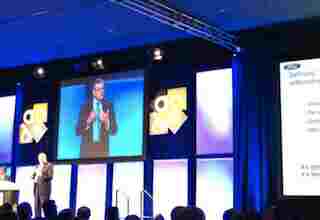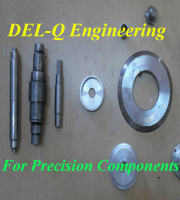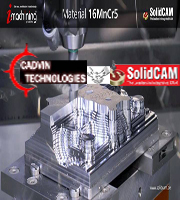I got a job in swati precision bangalore & even my batchmates got th
Focus on Automotive Electronics at Design Automation Conference
The 51st Design Automation Conference (DAC) took place at San Francisco’s Moscone Center the week of June 2nd. The show highlighted the latest developments in electronic design automation (EDA) such as design tools for integrated circuits (ICs) as well as reliability, verification and analysis tools, among others.
A number of tech trends got a nod at DAC including the so-called Internet of Things (IoT) which had designers talking, but also the impact of technology development on old industry truths such as Moore’s Law, with some predicting the end of Moore’s Law as we know it and why it’s not that big of a deal. And in case you were hungering for more, there was even discussion of how quantum mechanics is beginning to enter into the workings of the next generation of chips and chip design tools as transistor gate lengths fall below 10 nm.
But perhaps the most surprising thing about the show was its emphasis on the automotive industry, with an entire pavilion devoted to automotive electronics design.
Although a look at the numbers tells why it’s not such a surprise after all. By some estimates, the automotive electronics market is expected to top $77 billion by 2020. Even a casual look at the latest models on showroom floors reveals a glut of electronics from in-vehicle entertainment centers to USB ports and a range of networking options. Not to mention the already well-established number of electronic control units (ECUs) (from 50 to 100 per vehicle) and small motors and motor controls.
The second day of the conference featured a dual keynote from Jim Buczkowski, Henry Ford Technical Fellow and Director for EE Systems at Ford Motor Co., and Jim Tung, MathWorks Fellow at MathWorks, Inc. MathWorks provides the link between the EDA community and the automotive industry through their software, specifically their model-based design approach to engineering design.
“Cars will become just another machine connected to the Internet,” predicted Buczkowski. Of course we’re not there yet, but that is certainly the direction in which we’re headed. And judging by the interest level at a conference on electronic design automation, at the level of chip design and design automation tools, this is as clear a sign as one can have.
Buczkowski and Tung highlighted what’s new in automotive systems, such as a focus on sustainability, a general consumer trend that is now becoming important in the automotive industry as well. There are also many new components in automobiles, components which were never a part of such systems in the past, as well as an increase in sensor technology such as rear-view cameras and distance measurement sensors for adaptive cruise control.
While we shouldn’t expect completely autonomous self-driving vehicles any time soon (like in the next year or two) what will continue to happen is that cars will become more and more automated. Some day they may even be completely autonomous, with driver and passengers being free to truly enjoy the ride.
Like us on Facebook for latest updates on Jobs, Companies and upcoming News & Events





















